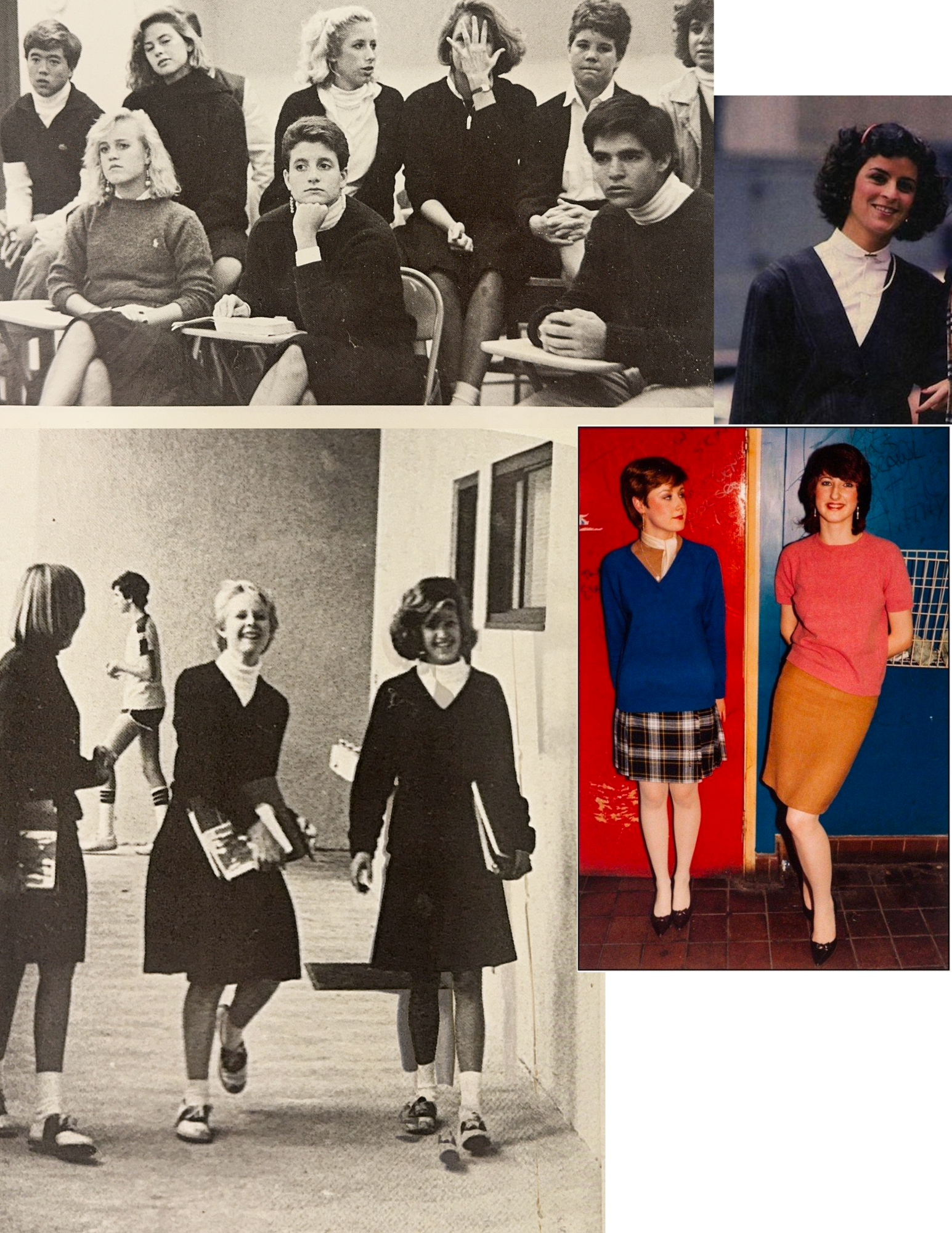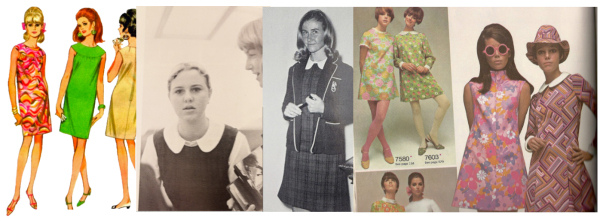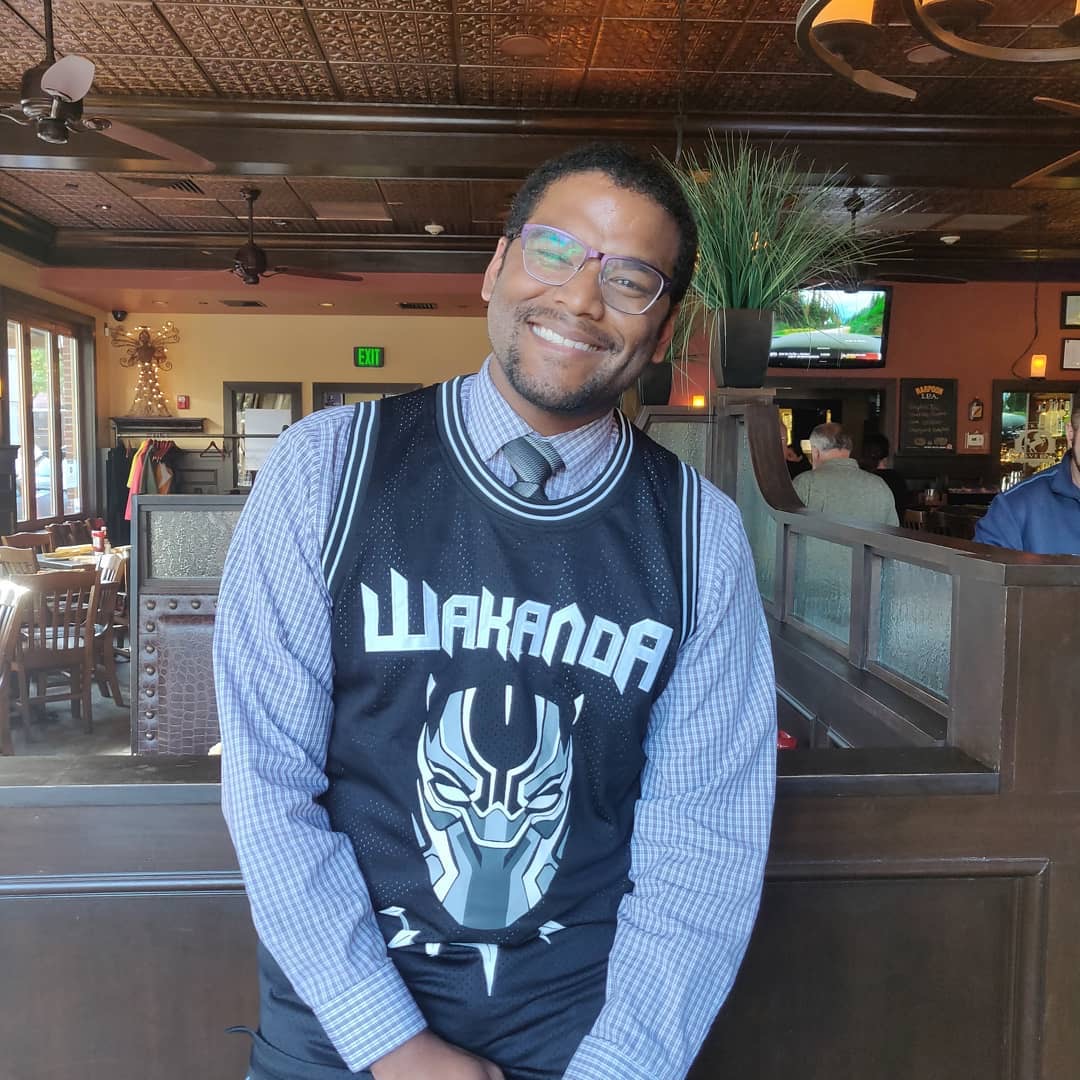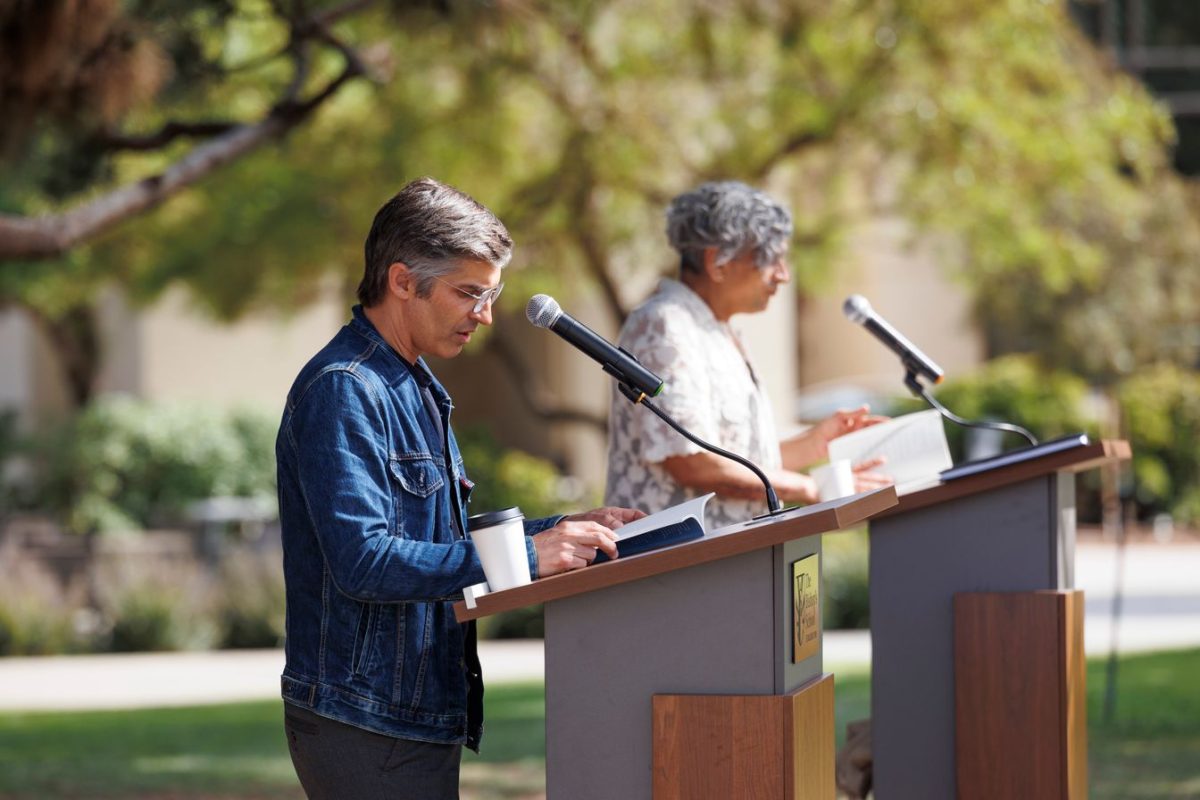Framed in the Bishop’s reception by mannequins of old school uniforms are the School’s founder Ellen Browning Scripps’ delicately calligraphed words, “I am thinking of a campus whose simplicity and beauty will unobstructively seep into the student’s consciousness and quietly develop a standard of taste and judgment.”
The style varieties of the displayed clothing exemplify the evolution of fashion trends in the past 60 years and its convergence with the School’s uniform’s updates. Based on yearbook records since the early 1960s, the Bishop’s uniform has often been “on-trend” and easily adaptable for students to stay fashionable and express themselves while at school.
The 60s
In the 60s, shift dresses — shapeless and high-necked with a knee-length hem — dominated women’s fashion. The decade was known for its bright colors and psychedelic patterns, and these were the trendy option for shift dresses.
Although the Bishop’s uniform didn’t adopt these funky prints, its policy did make black watch plaid shift dresses the mandatory outfit for the schoolgirls.
The Peter Pan collar was another trend of this decade, and it too appeared in the photos of the 1965 yearbook. Students wore a blouse under their dress but kept the collar above it, giving a similar effect to how white sleeves and a collar pop out of Bishop’s sweater vests today.
Through the lens of Bishop’s yearbooks, girls’ uniforms in the 70s seemed to remain the same as previous years, with the exception of new outerwear options. In the black and white photos, students sported dark sweaters, zip-up jackets, and classy white blazers. The blazers, which featured black trim along the lapels, collar, and breast pocket, look similar to one advertised in a 1978 clothing magazine (shown above).
In the 1980s, pleated plaid skirts hitting at the knee replaced the dresses of the previous decades.
Punk and mod styles were trending. Kim McBride (‘87), who attended the School for middle school through 1984, said that most students who participated in these trends incorporated them in their hairstyles — by shaving the sides of their head — and their jewelry — by wearing chained necklaces. Students sported vintage sweaters too, to make the uniform more fashionable, Ms. McBride said.
Overall, however, the school uniform policies were restricted according to Ms. McBride. She joked that looking back, she wonders if she enrolled in fashion school after high school to express herself after being limited by the uniform.
The 90s Chair of Mathematics Mrs. Catherine Beamer (‘95) recalled the regular uniform options in the 90s being only navy blue, hunter green, or white polos, with a pleated black watch plaid skirt. There were also only two or three outerwear options, Director of Counseling Mrs. Megan Broderick (‘98) said.
Chair of Mathematics Mrs. Catherine Beamer (‘95) recalled the regular uniform options in the 90s being only navy blue, hunter green, or white polos, with a pleated black watch plaid skirt. There were also only two or three outerwear options, Director of Counseling Mrs. Megan Broderick (‘98) said.
Associate Dean of Students Mrs. Jasmyn Tanner (‘98) described the extent of the sweatshirt variety in her years as a student: “If you were part of a certain group — let’s say you were part of the Bishop’s choir — they had a sweatshirt designed, but it wasn’t the students designing it. We didn’t have class sweatshirts either. That was not a thing.”
Up until the 1990s, the mandatory shoe was a saddle shoe. “I loved those saddle shoes,” Mrs. Broderick said. Mrs. Tanner recounted how she used to jazz these up.“I was very much into style, so I expressed myself through my shoes. I wore the saddle shoes, but I would write on them and I had my friends draw things, or I drew things, because they just needed a little something,” she said.
The uniform shoe policy was updated several times in this decade, Mrs. Beamer mentioned. “By the time I was a sophomore, penny loafers were also acceptable shoes for girls. And by the time I was a junior, we were allowed to wear not just saddle shoes or penny loafers, but also black leather shoes,” she said.
Loafers were a popular shoe style in the 90s. The 1995 yearbook displays countless low-top Dr. Martens leather shoes. “Dr. Martens were popular to wear, as long as they weren’t the platform ones or the high tops,” Mrs. Beamer said. The brand is considered to have peaked in this decade with the popularity of grunge fashion.
Students included grunge fashion elements in their uniform when they could. Outside of Dr. Martens loafers, students wore non-uniform flannels, opted for baggier-fitting polos, and layered undershirts to participate in the fashion trends circulating outside of the Bishop’s bubble.
But despite this, the Bishop’s uniform was not considered on-trend in the 1990s. Mrs. Tanner laughed, “Oh, no, it was not fashionable. It was not considered fashionable. No, not at all… Especially since the length of the skirt was at such an awkward spot and where we were required to wear it.” At that time, longer skirt lengths were enforced. “We used to wear boxer shorts under our skirts. If they could see your boxer shorts, they were upset,” Mrs. Tanner said.
Mrs. Broderick, on the other hand, said she “Liked it. Then, I thought it was cute.”
The 2000s
Up until this point, Bishop’s hadn’t partnered with Land’s End, the company from which students currently order their uniforms. Mrs. Beamer estimated that this change took place in 2000 or 2001.
Before this change, Bishop’s students could wear name-brand clothing items like polos, dress shirts, for example, enabling them to wear trending brands at school unlike after. However, “it became a little bit of a status symbol and maybe not as equitable or as uniform,” Mrs. Beamer explained.
In the 2000s, Bishop’s students were still limited to few options for uniform tops and outerwear. There was rumble and ruckus on the end of the bottoms though. In the 2003-04 school year, khaki pants were finally allowed in the girls’ uniform. The effort had been spearheaded by Alice Rink (‘98), according to Mrs. Broderick. “She was a good friend of mine in the class and was feeling like, ‘I don’t really need to wear a skirt every day, and it’s not my most comfortable way of being,’” Mrs. Broderick said of Ms. Rink. In fact, Mrs. Broderick added, “One day she had a bunch of us wear pants in silent protest. We all got uniform violations.”
But though the pants were highly advocated for, students were displeased when they arrived. English Teacher Ms. Cresence Birder (‘07) said, “The uniform changed when I went into ninth grade. We all thought it was very unfashionable. The pants that we were permitted to wear were extremely starchy, very unflattering, and very uncomfortable.”
With the pants came a switch in skirt style. “They took away the full pleats, and it became like a tube with two pleats on the side. I think they added a blue skirt. I don’t think it was khaki,” Ms. Birder recalled. “I remember students being very displeased with the cut of the new skirts… that they didn’t look as fashionable as the other skirts,” she said.
In their responses to these changes, students demonstrated their concern for fashion within the uniform policy. They also incorporated current fashion trends into the uniform where they could.
“Most students who wore skirts would wear knee socks. And only in probably my senior year did that start to shift into lower cut socks,” Ms. Birder said. Popularized by singer-songwriter Avril Lavigne, knee-high socks were a great way for students to wear a fashion trend while still being in uniform.
“For a long time when I was in high school, it was cool in fashion to have a really long undershirt or multiple shirts layered underneath one another,” Ms. Birder said. Bishop’s students took advantage of the few restrictions about layers to participate in this trend at school.
It got to a point however, according to Ms. Birder, that “the School had to make a length limit on the length of the undershirt that was permitted to come out beneath the polo, because it would be like a stripe of skirt, a block of an undershirt, and then a polo shirt.”
Today
When Ava Bradley (‘24) was entering The Bishop’s School in ninth grade, she did not consider the uniform fashionable. “Will I ever find a polo fashionable? No. Will I ever find the color of khaki fashionable? No. The existence of khaki shorts is a little bit traumatizing to me.”
However, when comparing it to the uniforms of other private schools in San Diego, Ava admitted that the Bishop’s uniform was more stylish. “The bar is so low though,” she said.
“I like that we have a variety of shirt colors. So they’re ugly, but at least it’s not bright red. That’s always a plus,” Ava conceded. Aline Woiwode (‘27) added, “I never had a uniform before I came here, and I was excited for one just because I had seen that they were cute, and they were preppy, and they looked comfortable.”
The current Bishop’s uniform has aligned with several fashion trends in the 2020s. Carhartt and Dickies chino pants were popular in the early 2020s, and Bishop’s has allowed pants from these name-brands as long as they are in a chino style. And tennis skirts, or any mini skirt with pleats, have been trending in fashion since at least 2020. The Bishop’s pleated skirt resembles it closely, but in a khaki color. Additionally, sweater vests have been in vogue for the past two years, and Bishop’s offers one on its Land’s End website.
The black shoe policy has been controversial for years, but it does still allow trending sneakers like Adidas Sambas, Nike Air Force Ones, low-top Converse, and others to be sported.
Students also have the opportunity to design sweatshirts for clubs, sports teams, and grades to further customize their uniform outfits. “It does add a little bit of variety and maybe a pop of color here and there,” Aline said.
Closing Thoughts
“The nature of the beast is that people are going to try to keep up with whatever the current trend is in a uniform, because that’s how they’re used to dressing,” Ms. Birder concluded.
Bishop’s students will keep on-trend with what is fashionable while in uniform, and as the School’s policy continues to evolve, will it mirror more closely the fashion rules of the outer world?











